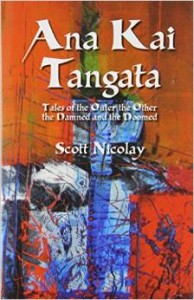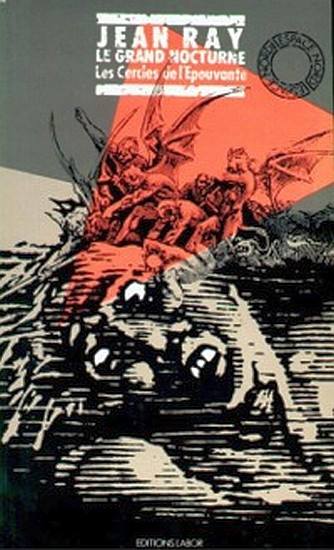 A double veil extends between the monoglot Anglophone reader and Jean Ray’s oeuvre. As with Joseph Payne Brennan, with whom Michael and I began this series several weeks ago, death and subsequent estate issues choked off the publication of much of his work for decades, but of course it is the immense and elemental barrier of Babel that yet separates most of his work from readers in the Anglosphere. The Belgian School of the Weird produced many great authors, but even from amongst the ranks of Anne Richter, Thomas Owen, Franz Hellens, and Jean Muno, only Raymundus Joannes de Kremer, AKA Jean Ray, rose to the status of “the Belgian Poe.”
A double veil extends between the monoglot Anglophone reader and Jean Ray’s oeuvre. As with Joseph Payne Brennan, with whom Michael and I began this series several weeks ago, death and subsequent estate issues choked off the publication of much of his work for decades, but of course it is the immense and elemental barrier of Babel that yet separates most of his work from readers in the Anglosphere. The Belgian School of the Weird produced many great authors, but even from amongst the ranks of Anne Richter, Thomas Owen, Franz Hellens, and Jean Muno, only Raymundus Joannes de Kremer, AKA Jean Ray, rose to the status of “the Belgian Poe.”
Jean Ray’s short fiction was first done over into English during the Pulp Era, with seven of his early tales appearing in Weird Tales and other magazines during a brief span in 1934 and 1935, all under the name John Flanders. The decades since the author’s death in 1964 have seen three standalone collections of his short fiction in translation:
Ghouls in My Grave, 1965, trans. Lowell Bair
My Own Private Spectres, 1999, trans. Hubert Van Calenbergh
The Horrifying Presence, 2009, trans. António Monteiro
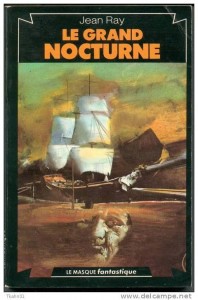 Each of these collections has gone out of print and will set the reader back a three figure sum if one can even locate a copy for sale. They are all problematic as well, given that they cherrypick across the author’s oeuvre. Ray organized many of his original collections around some central theme or motif such as whiskey, golf, or the Canterbury Tales, but the selections of all three translators obliterate this aspect. Of the three attempts, Bair’s is easily the most successful in capturing the blend of fresh fast-moving pulpiness and genuine literary flair that typifies Jean Ray’s best work.
Each of these collections has gone out of print and will set the reader back a three figure sum if one can even locate a copy for sale. They are all problematic as well, given that they cherrypick across the author’s oeuvre. Ray organized many of his original collections around some central theme or motif such as whiskey, golf, or the Canterbury Tales, but the selections of all three translators obliterate this aspect. Of the three attempts, Bair’s is easily the most successful in capturing the blend of fresh fast-moving pulpiness and genuine literary flair that typifies Jean Ray’s best work.
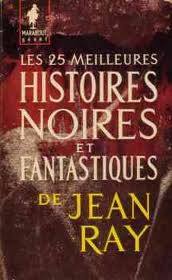 The good news for the Anglophone reader is that Ann and Jeff VanderMeer reprinted Bair’s translations of what are likely Jean Ray’s two greatest tales in The Weird: <<La Ruelle ténébreuse>> and <<Le Psautier de Mayence>>—and Atlas Press has kept in print Iain White’s excellent translation of what is likely Ray’s masterpiece, Malpertuis. Thus, although the bulk of Jean Ray’s work remains obscured to the reader of English only, the very best of the Belgian Poe’s oeuvre is presently accessible.
The good news for the Anglophone reader is that Ann and Jeff VanderMeer reprinted Bair’s translations of what are likely Jean Ray’s two greatest tales in The Weird: <<La Ruelle ténébreuse>> and <<Le Psautier de Mayence>>—and Atlas Press has kept in print Iain White’s excellent translation of what is likely Ray’s masterpiece, Malpertuis. Thus, although the bulk of Jean Ray’s work remains obscured to the reader of English only, the very best of the Belgian Poe’s oeuvre is presently accessible.
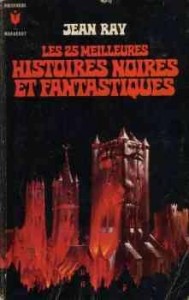 Some of Ray’s best known stories have been translated at least three separate times, but <<La scolopendre>> has never been published in English, which is a shame, since it is wonderfully vicious little tale. The story first appeared in La Parole universitaire in 1932 and was reprinted a decade letter in the collection Le Grand Nocturne. Additional reprints came in the posthumous 25 Meilleures Histoires Noires et Fantastiques and the second volume of the author’s Oeuvres Complétes. <<La scolopendre>> is a short short, barely more than 1500 words in length, scarcely above what we might count as flash fiction today. Ray nonetheless finds the time to hone this tiny blade into a razor sharpness. I have said elsewhere that Ray wrote as if he might slit your throat for pocket change, and this story is proof, as reminiscent in its style of Hans Heinz Ewers as it is of Jim Thompson. Witchcraft, a monstrous familiar, drunkenness, suicide, murder…if you are literate in French and this formula appeals to you, I encourage you to seek out the original, which appears in the abovementioned volumes. If you have no French, please trust me and be patient. If all goes well, that situation might improve in a year or two.
Some of Ray’s best known stories have been translated at least three separate times, but <<La scolopendre>> has never been published in English, which is a shame, since it is wonderfully vicious little tale. The story first appeared in La Parole universitaire in 1932 and was reprinted a decade letter in the collection Le Grand Nocturne. Additional reprints came in the posthumous 25 Meilleures Histoires Noires et Fantastiques and the second volume of the author’s Oeuvres Complétes. <<La scolopendre>> is a short short, barely more than 1500 words in length, scarcely above what we might count as flash fiction today. Ray nonetheless finds the time to hone this tiny blade into a razor sharpness. I have said elsewhere that Ray wrote as if he might slit your throat for pocket change, and this story is proof, as reminiscent in its style of Hans Heinz Ewers as it is of Jim Thompson. Witchcraft, a monstrous familiar, drunkenness, suicide, murder…if you are literate in French and this formula appeals to you, I encourage you to seek out the original, which appears in the abovementioned volumes. If you have no French, please trust me and be patient. If all goes well, that situation might improve in a year or two.
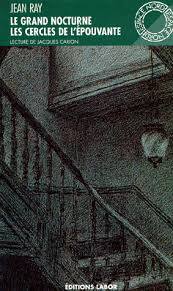 Given the 1932 publication date of <<La scolopendre>>, Jean Ray either penned this tale during his 1926-1929 prison stay or shortly after his release. His selection of a trio of college students as protagonists represents a departure from the sailors, prospectors, scam artists, and thieves of his earlier work. One might see this choice as anticipating Malpertuis, the author’s 1943 masterpiece, however.
Given the 1932 publication date of <<La scolopendre>>, Jean Ray either penned this tale during his 1926-1929 prison stay or shortly after his release. His selection of a trio of college students as protagonists represents a departure from the sailors, prospectors, scam artists, and thieves of his earlier work. One might see this choice as anticipating Malpertuis, the author’s 1943 masterpiece, however.
<<La scolopendre>> means “The Centipede,” and it is an outsized specimen of precisely such a creature that the three college students have gathered to observe. The giant centipede is the purported familiar of a legendary and freshly deceased sorceress who happens to be the aunt to one of the trio, so their vigil comprises a peculiar, even perverse, parody of the Hebrew rite of shiva, reconstituted as an ill-conceived and essentially voyeuristic paranormal investigation. As young Nathanson explains the scenario:
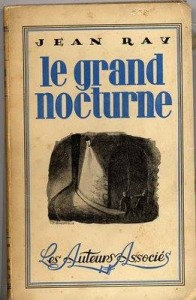 “My grandmother used to say that thrice seven hours after death, the spirit of the deceased sorceress appears in the form of one of those hideous creatures and revisits its home, at which time it becomes extremely dangerous. It is now exactly 21 hours since the spinster Sturmfeder died.”
“My grandmother used to say that thrice seven hours after death, the spirit of the deceased sorceress appears in the form of one of those hideous creatures and revisits its home, at which time it becomes extremely dangerous. It is now exactly 21 hours since the spinster Sturmfeder died.”
I shall note here that <<La scolopendre>> offers an intriguing comparison to “252 Rue M. Le Prince,” the second best story in Ralph Adams Cram’s slim 1895 collection Black Spirits and White. Cram’s story is also about college students keeping watch in the quarters of a departed witch, quarters still supposedly haunted by a many-limbed horror. It is fascinating to compare the different directions in which the two authors take their respective tales, especially given that neither narrative disappoints in the end. No “weird menace” or rational explanations here.
As is often the case chez Ray however, this story witnesses the consumption of copious quantities of alcohol, and his specificity in identifying particular libations rivals the lyrics of Steely Dan. In <<La scolopendre>>, the three students enjoy a generous supply of black Finnish Kümmel, descending deep into intoxication as they peer down the rain swept alley outside by means of a tiny mirror embedded in the window frame. Meanwhile the apartment of the sorceress Sturmfeder lies across an alley “so narrow they could have used a cane to break the windows…” Theirs is a cramped and claustrophobic situation. Fortunately the students have brought along a revolver, a boon given that guns and alcohol form such a fortuitous combination.
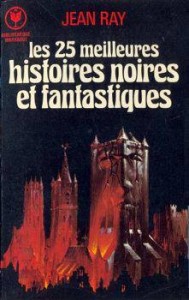 Sometimes a story can end with both a bang and a whimper…and the tread of an impossible number of legs…
Sometimes a story can end with both a bang and a whimper…and the tread of an impossible number of legs…
Although this essay concludes my contribution to Stories From the Borderland, readers still need to follow the link below to artist Michael Bukowski’s blog, where they can view his illustration for <<La scolopendre>>, a spectacular and appropriate conclusion to our endeavor: https://yog-blogsoth.blogspot.com/2016/01/centipede-familiar_6.html
Michael and I had a fantastic time working together on this project, and we are seriously considering a second series of Stories From the Borderland. We even have our list of five more stories lined up. If you would like us to continue with Stories, please let us know.


